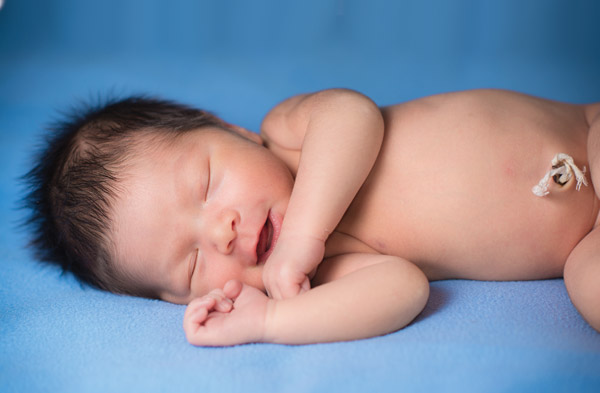


The umbilical cord is responsible for the nourishment of your baby before he/she is born. At birth, this cord is cut and the umbilical stump is left behind. Sometimes, this stump can bleed a little, which may cause the parents to panic. So is it really a cause for concern?

A little bit of bleeding from the belly button of a newborn for a few days after birth is considered normal. In fact, most of the newborns will go through this and show a little bit of oozing before or after the cord falls off.
Bleeding is also very likely to occur if the cord is pulled off by accident within the first 7-10 days after birth. Friction from the baby’s diaper or other clothing rubbing against the cord can also cause bleeding. You may notice a few spots of blood, or mucus-like discharge when you are changing the diaper. These are all common.
Clean the area around the umbilical cord and apply a little bit of pressure to reduce or stop the bleeding completely. Ensure that any friction being caused from the diaper or the clothes is eliminated so that the bleeding does not occur again.
Newborn belly button bleeding is not a cause for concern in most cases; however, if you find that the bleeding does not stop easily or is more than just a few drops, then you should consult your doctor immediately.
Abnormal bleeding can be a sign of infection, and some other symptoms of an infection include:
You should also call the doctor if any of the following problems, apart from newborn belly button bleeding, appear:
The skin around the umbilical cord should be cleaned during diaper changes if any amount of bleeding is noted. The best way to do this is to take a piece of cotton, soak it in some warm water and some soap, and then use this piece of cotton to gently wipe down the sides of the stump and the surrounding skin. The area should be pat dried gently after it has been cleaned.
Newborn belly button bleeding may continue for a week or two and this routine should be followed up until then.
Keeping the area around the umbilical cord dry until it falls off is a good idea. Bathe the child by keeping the water level below the naval, and use a sponge to clean other areas. A sloped bathing chair will help achieve this.
The diapers should also be folded or cut to ensure they do not come in contact with the umbilical cord. This will help prevent irritation from constant contact as well as reducing the chances of urine making the cord wet. Or you can choose newborn diapers that have a slight dip in their front so that they do not touch the cord.
Note: Never tug or pull the cord, and always wait until it falls off on its own.